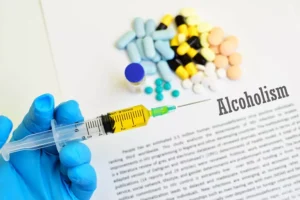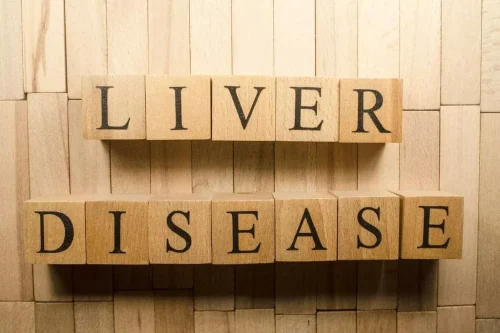
This indicates a pathology of brain circuits that are used to generate, and operate on, models of the world. Nutraceutical treatment of AUD is a promising method by which the toxic effects of alcohol on the body may be ameliorated by reducing oxidative stress in the body [233,234,235]. Indeed, compounds such as S-adenosylmethionine, which influences levels of reduced glutathione in the body, may protect against mortality in alcohol-induced liver cirrhosis [236,237,238]. Nicotinamide adenine dinucleotide phosphate (NADPH) oxidases may be key mediators of alcohol-induced damage. Therefore, nutritional treatments that influence NADPH function or the capacity to metabolize acetaldehyde (such as taurine and pantethine) may have protective effects against alcohol-induced damage [239,240,241]. In addition, omega 3 fatty acid supplementation has also been found to have protective effects against alcoholic liver disease and may also influence drinking behaviour [242,243,244].
Neurobiology of Addiction
Examples of such features are high rates of spontaneous remission, preserved sensitivity to contingencies, and efficacy of treatments that strengthen cognitive control. These features do not, however, necessarily invalidate a view of addiction as a brain disease. A balanced view would seem to suggest that to some extent, value-based decision making is preserved in patients with addiction, but that systematic biases different from those found in healthy people are present in this population when it comes to outcome valuation and action selection.

In Summary: The Preoccupation/Anticipation Stage and the Prefrontal Cortex
The National Center for Drug Abuse Statistics says more than 20 million people over the age of 12 in the United States have substance use disorder. Addiction is considered “highly treatable.” But it can take a few tries for the therapy to be fully effective. 3In operant procedures, animals must first perform certain response (e.g., press a lever) before they receive a stimulus (e.g., a small amount of alcohol). By modifying the required response physiological dependence on alcohol (e.g., increasing the number of lever presses required before the alcohol is delivered) researchers can determine the motivational value of the stimulus for the animal. 1In operant procedures, animals must first perform a certain response (e.g., press a lever) before they receive a stimulus (e.g., a small amount of alcohol). The first category of costs is that of treating the medical consequences of alcohol misuse and treating alcohol misuse.

What Are the Types of Treatment for Alcohol Use Disorder?
- The eCB system function is also affected by alcohol both acutely and chronically [132], and this system likely plays a complex role in addiction and withdrawal.
- However, AA opposes any therapeutic approach that does not endorse abstinence as its end goal [228,229].
- While these factors alone do not mean your condition classifies as alcohol addiction, it can be a contributing factor if proper treatment is not sought.
- AMPARs, in contrast, do exhibit a significant difference in ethanol sensitivity that is subunit composition dependent.
- The chapter explains how these substances produce changes in brain structure and function that promote and sustain addiction and contribute to relapse.
It uses its networks and expertise to help governments develop and introduce effective responses to prevent and control NCDs. Bringing together over 46 UN agencies, as well as the World Bank and regional development banks, the UN NCD Task Force promotes a whole-of-government and whole-of-society approach. Alcohol consumption may give rise to malignant tumours via the toxic metabolite acetaldehyde, which is mutagenic and can cause cancer by damaging DNA and preventing it from being repaired [20]. A small initial study published in 2012 found higher levels of DNA damage in the mouth cells of people after drinking alcohol [22].
- During puberty, accelerating cascades of growth factors and sex hormones set off sexual maturation, growth in stature and muscle mass, and bone development.
- Local protocols between alcohol treatment services and local safeguarding and family services determine the specific actions to be taken (Department for Children, Schools and Families, National Treatment Agency & Department of Health, 2009).
- Therefore, it is clear that there is substantial remission from alcohol-use disorders over time.
- These studies should investigate how pre-existing neurobiological factors contribute to substance use, misuse, and addiction, and how adolescent substance use affects brain function and behavior.
- The difficulty in demonstrating consistent changes in GABAA receptor function in dependent animals results, at least in part, from the complex changes in the production of different GABAA receptor subunits induced by chronic alcohol administration and withdrawal.
- This has since been followed by an international review of nearly 4 million respondents from 87 studies, which has shown that previous research ‘over-estimated the possible health benefits of alcohol and under-estimated its health risks’ [8].
Given this background and so as to effectively treat AUD, it is imperative that we understand the neurobiological mechanisms behind the development of addiction. In this review, we discuss the current literature on the neurobiology of AUD, with a focus on the biological changes that occur in the brain resulting in addiction. We also highlight the current non-pharmacological and pharmacological therapies available for the treatment of AUD and conclude by listing potential future directions in this rapidly evolving field of research.

Impact of Opioid Antagonists on Alcohol’s Effects on the Brain
- Group meetings are available in most communities at low or no cost, and at convenient times and locations—including an increasing presence online.
- Another intriguing possibility for how ethanol can indirectly affect GABAA receptor function involves neuroactive steroids—steroid molecules that are naturally produced in the adrenal glands, ovaries, testes, and brain and which can act on GABAA receptors and modulate their function.
- More recently, however, researchers have been turning their attention to the evaluation of changes in withdrawal symptoms that extend beyond physical signs of withdrawal—that is, to those symptoms that fall within the domain of psychological distress and dysphoria.
- GABA release also is increased in the amygdala of alcohol-dependent rats, possibly because these animals have increased CRF1 receptors; the effect of acute ethanol administration on GABA release in this brain region is unchanged in the dependent animals (Roberto et al. 2004a).
- Attempting to address these limitations, we have started to examine individual variation in choice behavior128.
Signs That Tolerance or Dependence Have Crossed Over to Addiction

How to reduce your risk of becoming alcohol dependent

